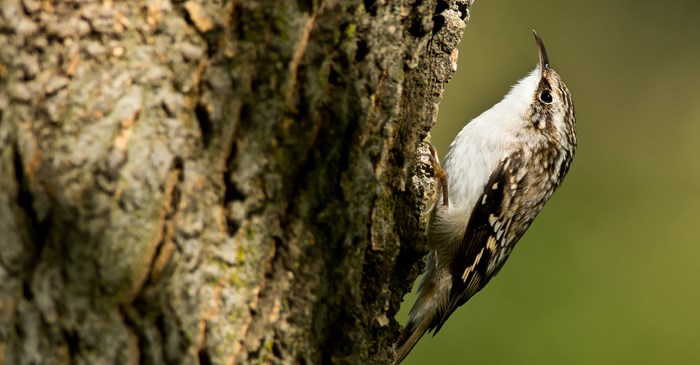The Brown Creeper, with their short necks, rounded bodies covered with brown speckled plumage, and long, curved, needle-like beaks, in many ways looks as though it inspired an illustration of a fairy-tale woodland creature. And that very well could be, since they are also found throughout the old-growth forests of Europe as well as North America
Others have found their movements startling: Moving up and down the trunk of a tall tree, they blend in well, appearing as a “fragment of detached bark that is defying the law of gravitation,” as naturalist W. M. Tyler wrote in 1948.
At any rate, the Brown Creeper is at home in the woods. And if you live in or near a wooded area with many mature trees, you just might have the ideal habitat for the Brown Creeper.
In the spring, they build unusual but well-disguised nests, tucked behind a large piece of bark of an old or dying tree, raising just one set of hatchlings per year. In the summer, you’ll see them "walking" up and down tree bark, preferably the thick bark of an old tree, probing with their needle-like beaks for spiders, insects and larvae. Since they camouflage so well, it’s much easier to find them by sound than by sight.
Brown Creepers don't migrate for the winter, though some far north birds will edge southward and mountain-dwelling birds will move to lower altitudes. As is the case with other songbirds, this is the season to set aside their territorial tendencies, joining flocks of other species to forage for seeds and plants.
Winter is also their time at the feeder, favoring hulled seeds and chopped nuts. If your property backs up to a mature forest, try setting out Lyric Delite Mix and keep an eye out for a rare sighting of the Brown Creeper.
